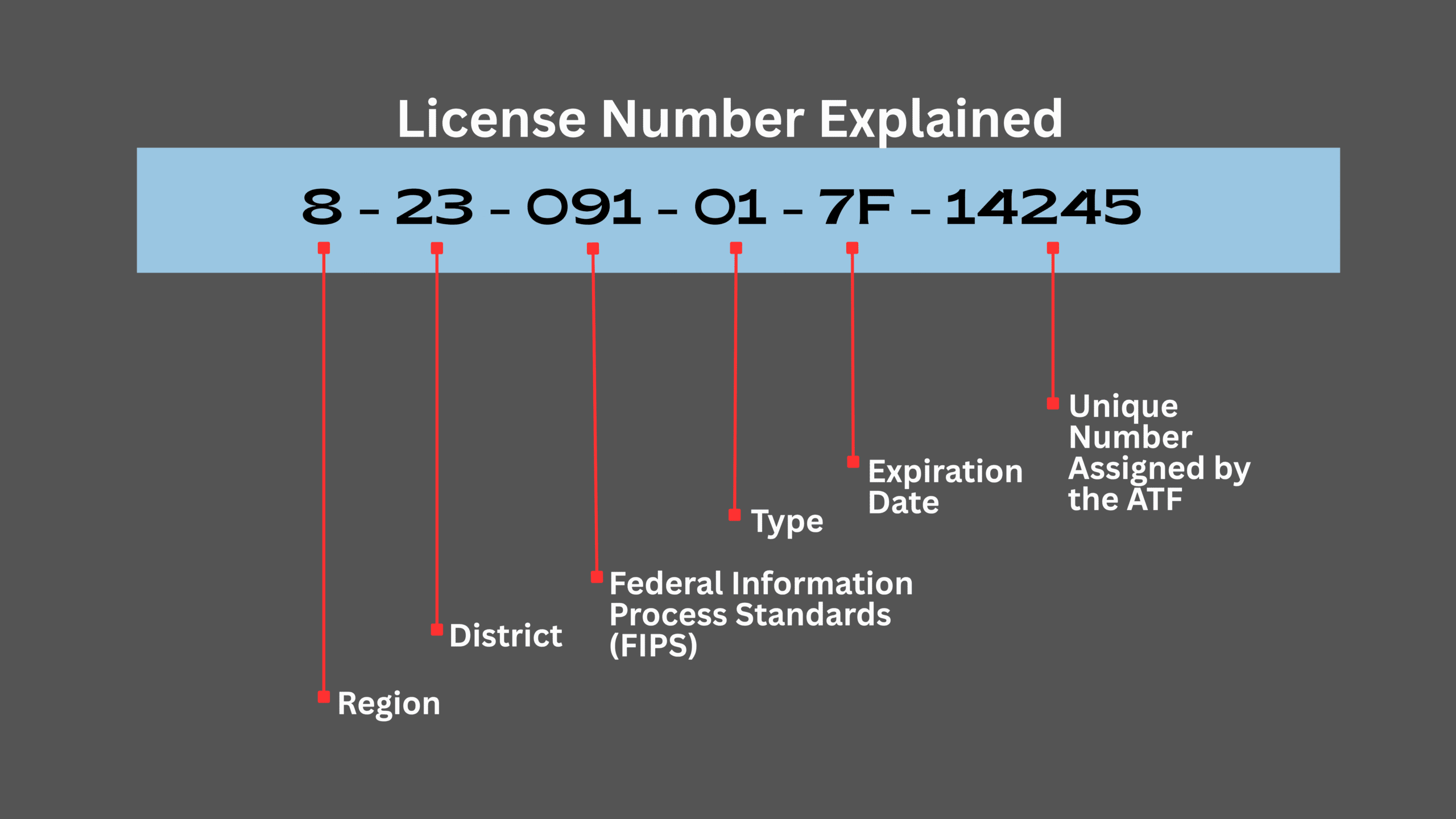Every newly minted FFL is issued a license number by the ATF, which on the surface, appears cryptic. It consists of six segments separated by a hyphen of fourteen (14) numbers and one (1) letter. Using my actual license, the license looks something like this:
8-23-091-01-7F-14245
But what do these segments and the 15 characters represent? Here is the breakdown, from left to right.
Segment 1 – Region. The ATF breaks down the entire U.S. into regions to make it easier for them to do administrative tasks and to issue licenses. Imagine if all 80,000+ licenses all had to come from one place. Here are the regions:
- 1 – Southeast
- 3 – Midwest
- 4 – Central
- 5 – Southwest
- 6 – North Atlantic
- 8 – Mid-Atlantic
- 9 – Western
So, my place of business in Pennsylvania is in the Mid-Atlantic region.
Don’t ask me why there is no Region 2, I don’t know. However, just knowing the region can help you deter fraud. If a customer located in Washington state gives you an FFL number beginning with “1”, you may get suspicious.
Segment 2 – District. Before the ATF became a part of the Justice Department, it was part of the Treasury Department. The 2-digit “District” number still exists and represents the IRS district in which the FFL is located. So, in my case, my place of business is in IRS district “23”. This segment has little value to us.
Segment 3 – Federal Information Process Standards (FIPS). You can ignore this third segment since it is only valid for federal paper-pushing.
Segment 4 – Type. This number is very important because it tells you the type of FFL holder. For example, you would not transfer a modern firearm to a Type “03 Curios and Relics” license holder. Here is the list of license types:
- 01 – Dealer in firearms
- 02 – Pawnbroker in firearms
- 03 – Collector of Curios and Relics
- 06 – Manufacturer of ammunition
- 07 – Manufacturer of firearms
- 08 – Imported of firearms
- 09 – Dealer in destructive devices
- 10 – Manufacturer of destructive devices
- 11 – Importer of destructive devices
Segment 5 – Expiration Date. The date is broken down into a 2-character string, a numeric character, and an alphabetic character. The numeric character represents the year, and the alphabetic character represents the month. So, in my license example above, the Expiration Date of “7F” expires in June 2027. Here is the alphabetical list representing each month:
- A – January
- B – February
- C – March
- D – April
- E – May
- F – June
- G – July
- H – August
- J – September
- K – October
- L – November
- M – December
FFLAssist converts each of these two-character representations into its Julian date equivalent. If you attempt to purchase firearms from an FFL distributor with an expired license, you will get a pop-up error message stating the FFL’s license has expired. You can also decide how far in advance of the actual license expiration you want to be warned of a pending license expiration. So, if you use the Expiration Date of my example, “7F”, and the pending warning is set to “3 months”, issuing a purchase order in March 2027 will be fine. But if you issue a purchase order in April, May, or June, you will get a warning message that the distributor’s license will expire soon. This warning message is not a showstopper. It is provided to you in case what you are ordering has a long lead time. The other benefit FFLAssist provides with this lead time is that you can use it for your license, so that when you get that warning message, you’d better think about renewing your license.
Segment 6 – Unique Number. The final segment consists of five (5) numbers and is unique for every FFL.
The only segments that are important to you are Segments 1 (Region), Segment 2 (District), and Segment 6 (Unique Number). If you use ezCheck, you are only asked to enter those three pieces of information to conduct a lookup of any FFL.
To discuss what FFLAssist can do for your business, click here.
To schedule a no-obligation 1-hour demo, click here and select which date/time works best for you.

